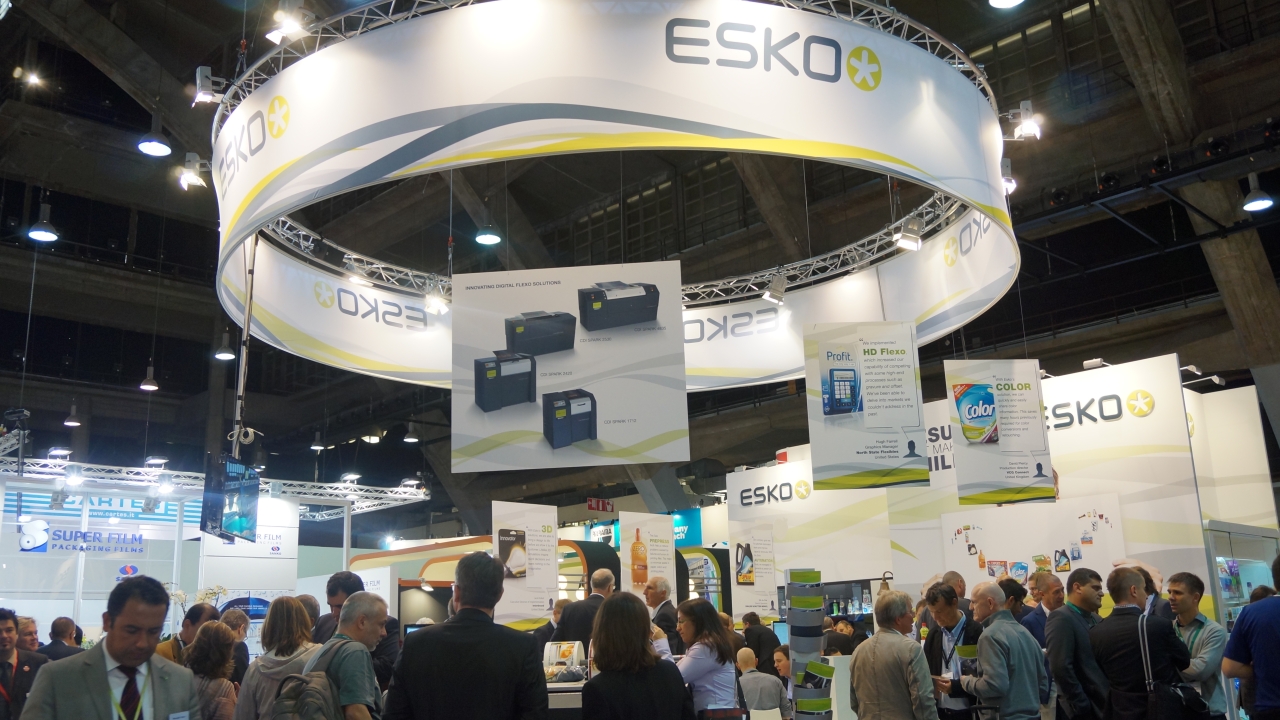Industry speaks: technology trends
Though flexo is one of the more popular technologies in India for label printing industry, high quality labels are being printed using letterpress and digital as well. Most prominent printers are getting latest technologies in-house to meet customer requirements and market demands. However, the label segment continues to face high price pressure. It is thus essential to revive business sentiment by restarting the investment cycle.

This year looks better in terms of the number of flexo presses installed. Where last year, Flexo Image Graphics (FIG) installed four Mark Andy presses and five Rotoflex, this year the company as already installed three each from Mark Andy and Rotoflex in the first six months. G¬ourav Roy, FIG managing director, says: ‘We are looking forward to installing three more Mark Andy presses and three Rotoflex machines by end of the current year.’
As opposed to one installation of Omet in the last financial year, two Omet presses have been installed in the first half of the current 12-month period. One more is expected to be installed before March 2015.
Nilpeter India installed six presses in the last financial year. This year, it would have installed six presses by the end of the second quarter and is aiming to sell and install 12 presses by the end of the 2013-14 financial year.
Multitec has sold seven presses since April 1 and have confirmed orders of nine presses that shall be installed by the end of this fiscal. The company is aiming to sell 20 flexo presses by the end of 2014-15. Amit Ahuja, managing director, Multitec, said, 'Customers are buying fully loaded presses with all options, more number of colours and more automation in the presses. The emphasis is on less material wastage and faster job setup.'
Gallus India has installed eight presses in India in 2014. In addition, the company has also installed two Gallus EM 280 presses at Manipal Group in Nigeria this year. However, Samir Patkar, managing director of Gallus India, says: ‘The market is not very bullish currently to invest in capital goods. This is primarily driven by extreme price pressure and the competitive situation as driven by label printers. Print buyers are benefiting from this situation and instigating the concept of reverse auctioning. Most label printers are challenged to either reduce manufacturing costs or increase efficiencies to remain profitable. This is the beginning of a new technology era and mindset a label printing firm will carry forward in India.’
Roy says: ‘First two quarters have been slow however I hope to see more movement in the second half of the year.’
In the letterpress segment, Label Planet sold three Orthotec Concorditek presses last year in India and the company expects to double the figure this year.
Mehul Parmar, chief executive officer at FIP, says: ‘We have sold a total of 50 letterpress plate making equipment since 2010 and we get one to two orders every month.’
R K Label Printing Machinery based out of Ahmedabad, Gujarat sells about 50 letterpress flat-bed printing machines in a year.
Speaking of future technologies, Gautam Kothari, managing director of Skanem Interlabels, says: ‘Digital looks promising, especially with the way it is evolving. However, I think there are certain advantages of conventional (UV flexo/UV offset) systems which digital falls short of. A combination of the two would be the future.’
Digital is at a nascent stage in India. Though some installations are gradually happening across the country, it will still take time for the technology to mature in the market. There are 14 HP Indigo and five Xeikon presses in India catering to the labels and printed packaging segments. The first Colordyne CDT 1600-PC Sprint was installed in Chennai in February.
Appadurai, country manager, Indigo and inkjet solution, HP India sales, is enthusiastic about the growth of digital in India. He says, ‘it is increasingly getting difficult for companies to take unprofitable short-run jobs because of increasing raw material and overhead costs. I see huge double digital growth in this business and we are rocketing up in India.’
Roy says: ‘There is a lot of enthusiasm in the market and we are hoping to install a couple of Xeikon presses in the Indian market this year.’
However, Appadurai adds: ‘The demand for short-run is not huge. Customers who have HP Indigo see it as a complementary technology to flexo and gravure technology. I don’t see a standalone digital technology except with a high end niche converter such as pharmaceutical labels for export.’
Manish Kapoor, sales manager of Nilpeter India, holds a similar view, and says: ‘Digital presses should be installed in a plant along with flexo presses for best utilization.’
Priyata Raghavan, director at Sai Packaging says: ‘Digital complements flexo in a small way but it is an expensive proposition.’
With inkjet presses being launched by companies such as Technova, Vinsak, Epson, EFI Jetrion amongst others, the technology is catching up in the country with printers using it for security applications such as variable data printing and 2D barcodes.
Ranesh Bajaj, director of Creed Engineers, is confident that digital is soon going to be big in the Indian market and there will be more clarity in a couple of years. ‘It is not a replacement technology, it’s a complementary technology,’ he says. ‘Therefore, every label printer will have to have the gamut of machines such as flexo, digital, offset or letterpress machines and the entire finishing to cater to the growing market.’
Amit Sheth, managing director of Label Planet, says: ‘We see a mix of all technologies being adopted in India. Dominance of any single technology is next to impossible. Digital is growing but several factors are being considered in this technology which does not suit the Indian market. Basic knowledge of costing of label production is more important than adopting new technologies.’ He added that a combination of flexo, intermittent feeding, no tooling, full servo drive with tension and register corrections, in-line hot foil stamping as well flat-bed conversion option will give users the best production in the most economical way.
A.M.S.G. Ashokan, president of AIFMP, concludes: ‘The future of label printing will lead to investing in multi-substrate and multi-process printing machines like flexo, offset, rotary screen printing and hot and cold foil stamping. This is needed due to high volume requirements of the FMCG and personal care industries with security features and labels that make their products more appealing.’
Stay up to date
Subscribe to the free Label News newsletter and receive the latest content every week. We'll never share your email address.

